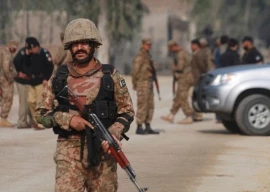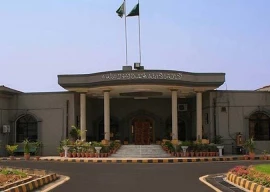Despite the fact that rape is a serious crime punishable by death, incompetent law enforcement mechanisms have made it easier for perpetrators to get off the hook.
According to the Human Rights Commission of Pakistan (HRCP), an incident of rape occurs every two hours and an innocent victim is gang-raped every four to eight days. In recent years, female parliamentarians and gender rights activists have vociferously campaigned to bring the issue of rape within the realm of state priority issues. But the judicial system and police infrastructure have not played the role expected of them.
The Supreme Court’s decision to acquit the perpetrators of Mukhtar Mai in 2011 is a case in point. As a result, there is a deep-rooted tradition of silence surrounding the phenomenon of rape in Pakistan.
Social attitudes
“Social factors play an important role in determining the incidence of rape,” says Omer Aftab, CEO at White Ribbon Pakistan, an organisation that aims to put an end to gender discrimination against women by creating awareness among men. “Rape victims are treated as the architects of their own distress and some people in society see them as dishonest and unreliable. A majority of victims are forced to be silent. They do not confide in their families and do not report the crime because they fear stigmatisation at the hands of the police.
Rape – the three causes
Speaking about the impact of society’s indifference to rape victims, Aftab suggests that there are three main causes of rape in Pakistan – lack of education, sexual frustration and, lastly, the poor implementation of the law.
The absence of literacy encourages patriarchal tendencies among men. As a consequence, innocent women have to bear the brunt of this power struggle.
“Ignorance gives origin to many unpleasant consequences,” says Aftab. “Men who lack basic education think women can be treated as chattels and exploit them sexually for their own gains.” In a society where sex is not openly discussed, sexual frustration is likely to prevail. Aftab believes that such feelings of agitation are influenced by a variety of other social factors and provide a practical explanation for the high incidence of rape in Pakistan.
“In the absence of proper implementation of the law and appropriate deterrence for culprits, rape victims cannot obtain justice,” he says. A more effective system of deterrence can only emerge from an in-depth review of the current law. “The Protection of Women Act 2006 favours rape victims and removes the strict punishments imposed on them under the Zina Ordinance,” Aftab explains. “Moreover, rape is now adjudicated as a part of the Pakistan Penal Code (PPC). This is a step in the right direction but it fails to prevent the incidence of rape.”
Dynamics of tradition
Aftab views the conduct of tribal jirgas as the antithesis of state law and feels that their decisions are generally insensitive towards women. “Decisions of jirgas are usually biased against women in rural areas. Customary practices are not free from constant manipulations,” he adds. “In most cases women who have been raped are killed while their rapists get away with impunity. If a man wants to exact revenge on a woman, he simply rapes her with the satisfaction that she is the only one who will have to bear the consequences.”
Global focus
Injustices against rape victims have, in recent years, been subject to international attention. Maliha Zia Lari, a Sindh High Court advocate and gender rights activist, says, “Rape victims have suffered violence regardless of whether the laws are good or bad. If the laws are bad and the victims are not getting justice, it may increase the support and sympathy they receive from both national and international actors.”
Published in The Express Tribune, July 6th, 2013.
COMMENTS (17)
Comments are moderated and generally will be posted if they are on-topic and not abusive.
For more information, please see our Comments FAQ

1725612926-0/Tribune-Pic-(8)1725612926-0-165x106.webp)








1725254039-0/Untitled-design-(24)1725254039-0-270x192.webp)






I'm glad you've highlighted this issue. The reasons for rape vary - it's a complicated matter. But at the end of the day, it shows that someone's thinking. Good job White Ribbon.
I do not see how education can prevent rapes - unless education is a mean for boys and men to normalize their relation with women, to have interaction, communication, so to appreciate their counterparts as normal human beings - but I do agree that sexual frustration as an outcome of a highly segregated society results in more sexual harassment and attacks. Men in most Islamic countries seem to be obsessed with sex. I have lived in Egypt for several years. I cannot leave the house and walk down the street without getting harassed and Muslim men asking if they can come back to my house. When I state I am married to an Egyptian man, they then want to ask me questions on how satisfying an Egyptian man is in bed for a white woman. A taxi driver even asked me to have sex with him when I was 8 months pregnant. I could not walk down the street in Cairo with out been hissed at and continually harassed. On more than one occasion I was reduced to tears. When breast feeding my son, I would find old Egyptian men trying to take pictures (and before you ask yes in all above instances I was covered up) The when in Dahab (south Sinai) with my son, I used to meet with other women who had babies and go to the beach and take them swimming, if this was late afternoon, Egyptian men would be lined up with the mobiles trying to video and photograph us coming out of the sea. Then there are the workers areas, where my husband would not let me anywhere near, he would say to me women do not go to this area and you will never see a woman here because it is not safe, these men have never seen women other than their own family. I am speaking from personal experience, and these examples above are a few examples out of hundreds.
@Gp65 Your counterargument based on the comparison of rape statistics between countries is flawed. Australia and Sweden have high number on paper for a variety of reasons. For one, marital rape is a punishable crime, whereas most developing countries do not have not such legislation. In US rape is every sexual interaction between someone under 18 years old. If it was like that in the rest of the world, Muslim countries and India would be the number one, since a lot of girls get married under 15. Sweden has a very broad definition of rape, as a man can be charged for rape if he does not use protection. In Sweden there has been this ambition explicitly to record every case of sexual violence separately, to make it visible in the statistics. So, for instance, when a woman comes to the police and she says my husband or my fiance raped me almost every day during the last year, the police have to record each of these events, which might be more than 300 events. In many other countries it would just be one record - one victim, one type of crime, one record. You cannot compare countries' records, because police procedures and legal definitions vary widely. Furthermore, there is less stigmatizing and danger for women to report a rape in Western countries than in a country like Pakistan or India, so naturally the rape statistics are going to be higher here. Rape is more common in societies that suppress women and their rights as human beings.
"an innocent victim is gang-raped "
Not sure what this statement means but is it possible to be a "guilty" victim of gang rape ?
Rape has nothing to do with lack of education, social awareness or religious teachings. It is an enforcement of a man's will over a woman through brute force, usually used as a form of punishment for the woman or her family.
really dont understand what the article is trying to tell. poor attempt at explaining laws or legal issues of rape
"In most cases women who have been raped are killed while their rapists get away with impunity. If a man wants to exact revenge on a woman, he simply rapes her with the satisfaction that she is the only one who will have to bear the consequences.”
That's the sad reality and, unfortunately, you're right when you blame it on a power struggle and the influence of patriarchy.
Good analysis. You've broken it down well. It's hard to just pin down the causes. But it's necessary. I think Omer Aftab has the rural areas in mind when arguing the causes of rape.
Absence of literacy is a key component of sexual exploitation and rape. How does one explain honour killings? Also, literacy doesn't emanate from what is learnt from school. It has a lot to do with upbringing and exposure.
'basic education' has been taken in the literal sense by some commentators. Let's explore the statement made by Omer Aftab in the article:
Men who lack basic education think women can be treated as chattels and exploit them sexually for their own gains
The statement appears to reflect an anti-male bias. But the focus is not on education in the literal sense. It's on education of the hazardous consequences of rape.
Firstly, every rape case does not have material from which DNA could be extracted. Secondly,You can't prove from a DNA test that it was a rape! Thirdly, even women who aren't raped sometimes have other signs on their body(e.g. of teeth etc.) THINK!
The number seems to be too exaggerated and secondly i wouldn't agree with the cause "Lack of education" as number of rapes is much more higher in countries like US etc where education is three folds higher than our's. Main cause is lack of social awareness, immoral media and ignorance from Islamic teachings of morality.
This is possibly the worst analysis of rape culture in Pakistan I’ve ever read. According to this dude from the White Ribbon Campaign: ‘there are three main causes of rape in Pakistan – lack of education, sexual frustration and, lastly, the poor implementation of the law.’
Apparently there is a direct correlation between the lack of education and ‘patriarchy’ which in turn facilitates the release of ‘sexual frustration’. So basically, patriarchy is not a system which contains rape culture but an individualist tendency which increases or decreases with your level of education (code word for class in Pakistan). In conclusion, sexually frustrated poor men want to rape women because they didn’t go to school where they could read about how rape is bad. More conclusions: rich men don’t rape, rape has ended in countries where there is full literacy and that men are inherently sexually frustrated.
What about DNA tests not being admissable as primary evidence? That means rape victims have to rely on the testimony of four pious Muslim men, who just happened watch a woman get raped and then come forward and testify. The problem is not with the law enforcement agencies, it is with the Council of Islamic Ideology and the law itself.
Refreshing to see the effort made by White Ribbon and the thorough understanding of issues pertaining to rape.